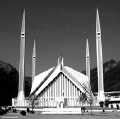Dr M Athar Khan
UNLIKE the principles of teaching, some methods of teaching are clearly stated in the verses of the Qur’an, whereas some Qur’anic methods of teaching are derivable from the text of the Qur’an. In either case, the Qur’anic methods of teaching are based upon the knowledge of the nature of man as compared with the modern theories of learning, which hold an incomplete view of human nature, and consider only one or a few aspects of man as human. Contrary to the methods of learning and teaching based on modern views, the Qur’anic methods of teaching are rooted in the wholeness of human nature. The Qur’anic methods of teaching make reference to the inherent qualities and characteristics of man, which have been specified explicitly or implicitly in the verses of Qur’an as discussed earlier (Article-12) in reference to strengths and weaknesses of man. The Qur’anic methods of teaching include the following: Lecture (Khitab): Learning by listening and teaching by lecture are natural ways of communication. Human beings are inherently Mutakallim (having the ability and power to use language), and Samee’ (the one who hears). Imitation (Taqleed): Imitation implies act of using someone or something as model and copying or doing things or behaving the same way as someone else. Experiment (Tajribah): the word Tajribah has not been used in the Qur’an. Instead, the Arabic word ‘Amal’, appears in various verses of the Qur’an to mean the act of an individual which is performed with purpose. An Amal performed the same way and under same conditions must have same consequence ever again. Demonstration (Izhar): Demonstration means showing or presenting a thing, an act, a process or an event in a way that the spectator fully and realistically perceives it.
Observation (Mushahadah): Mushahadah meaning ‘to be present’ also means obtaining sensory awareness of things, events and conditions as they exist or occur in the real world at a given time and place. In educational context Mushahadah implies translating the results of observation (data) to transform them into sensory perception or perceptions. It is used to gain knowledge of what lies beyond the present objects, events and conditions. Analogy (Mathal): Mathal or tamtheel denotes abstract or unknown. It denotes similarities in features between a thing, event or condition that exist only in idea and concept and the thing, the event and the condition that has a conceivable material or known existence. Dialogue (Mukaalamah): Mukaalamah means ‘conversation between two or more persons’. In Qur’an Ka’la’mah, in its different forms, has been used to convey different meanings in different contexts. Unlike ‘Socratic dialogue’, which is a form of dialectical reasoning employing question-answer method for attaining absolute certainty or truth about things and concepts, Mukaalamah has a wider application. It includes all kinds of verbal two-way (2:30-32) and one-way communications (28:16-18): and non-verbal and indirect symbolic communication, which manifest as laws in the nature and functions of elements, signs and natural phenomena such as weather changes; occurrence of day and night, volcanic activity; storms; epidemics; aging, birth and death etc.
Repetition (Takraar): The Arabic word Takraar meaning repeating something or doing it again and again is also used to mean recurrence certain action or event. In different contexts Takraar also means ‘to return’, ‘to gather or compile’. It also signifies ‘emphasis’ and ‘reference to the bygone’. Visits (As-Sair): As-Sair (Verse 6:11) means going around places ‘with aim and purpose to learn lessons and get insight into them. Reasoning and Argumentation (Daleel): Daleel is method of creative learning, which involves processes of ‘deductive and inductive methods in teaching’ and learning. The Qur’anic method of Daleel, presents method of teaching and learning, which involves functions of higher mental processes. Method of teaching and learning by Daleel is primarily based on references to known and conceivable things and events, and on observable and real objects and phenomena. Comparison (Mawaznah or Taqabal): The word Mawaznah denotes drawing similarities and differences between two or more things. In teaching and learning it involves observing or considering the characteristics of two or more objects or concepts (groups of objects or concepts) with the view to highlighting intra-group distinction between them. Making comparison between things and ideas or concepts indirectly helps concept formation and clarification of concepts of things and ideas. It also provides basis for balancing their behaviour and harmonizing it with things and systems in nature. Question-Answer Method is commonly used in teaching. Text of the Qur’an uses different type of questions in different situations and for different purposes. However, what distinguishes the Qur’anic way of questioning from others is that they appeal directly or indirectly to the individual’s self, human intellectual needs, feelings and emotions as it is exemplified in the verses of Qur’an: e.g. (2:44), (2:258), (49:12), (2:260) and(105:1-2).
Didactic Teaching is the most commonly used traditional method of teaching moral lessons particularly in religious institutions. To be effective however, the didactical teaching and learning necessitate the following: i) ‘Awe arousing teaching and awe inspired learning’ atmosphere which is reflective of ‘greatness’ (quality and worthiness of teacher that creates for him love and admiration in the students) on the part of the teacher and ‘faith’ (trust and confidence in the teacher) on the part of the student. ii) Love and care that the teacher demonstrates for the students. iii) Student’s obedience to, and faith in the teacher; and his willingness to listen to him and show obedience to him in all respects. Narratives (Qissa or Hikayat) mean account of a real or an imaginary event presented in any form with the purpose of acquainting students with sequence and consequence of an event that did or would have happened in the past. Narratives as method of teaching have been frequently used in the Qur’an and formed tradition of Muslim teachers and Sufis for teaching morals and values.
—The writer is Prof & Advisor to the VC, Sarhad University, Peshawar.









